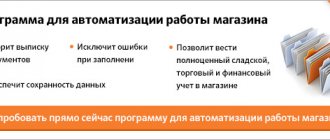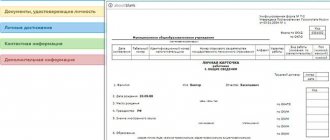Supply optimization is the key to solving the problem
The very first element in this chain is optimization in product supply. This is especially important when it is necessary to organize high-quality storage in our warehouse.
If this process remains unsystematic, the workload of warehouse workers will be unevenly distributed. In addition, the quality of work is unsatisfactory:
- downtime cannot be ruled out
- It’s not uncommon to work in “emergency” mode,
- accumulation and queues of freight transport,
- acceptance of goods with gross errors.
Agree, all this leads to the fact that the quality of product reception drops significantly.
How to keep inventory records of inventory items?
In manufacturing companies, I often see a serious mistake in the way warehousing is organized. A striking example is one of my clients in the Omsk region. The company produces equipment for the food industry. So at this plant the warehouse was subordinated to the deputy for production. “Well, this is convenient - the senior foreman directly supervises the storekeepers and there are no problems with issuing materials,” the managing director tells me.
But! At the same time, there was no normal warehouse accounting. The reason is simple - for production workers, the main thing is to release products on time, and accounting and order in the warehouse are in second place for them.
The lack of normal accounting in the program led to the fact that the production workers themselves no longer understood how much and what material they needed to purchase in order to put an order into production. They won’t recalculate everything manually every time. And if the true need for materials, taking into account leftovers, is not known, then there are 2 options - either not to take the order, or to purchase what is needed just in case. And literally in 2 years of such work, the cost of purchasing all the owner’s profit led to terrible cash gaps. Loans, debts, stress...
But it's never too late to put your warehouse accounting in order. It is necessary to transfer the warehouse management to the supply department, which must report to the deputy for production preparation. And the implementation of accounting tools (regulations, forms for receipt and write-off, movement) should be entrusted to the chief accountant, since storekeepers report to the accounting department on all issues of accounting for inventory and materials.
Below I will give you a brief reminder on inventory accounting. It contains the main actions and accounting and reporting frameworks.
1. Issuance of goods and materials.
Based on the material consumption standards, a limit intake card is issued. This card is the primary document for the storekeeper to release material assets from the warehouse to the foreman.
A limit-fence card
is used if an organization has limits on the supply of materials to register the supply of materials that are systematically consumed in the manufacture of products, as well as for ongoing monitoring of compliance with established limits on the supply of materials for production needs and is a supporting document for writing off material assets from the warehouse.
As a rule, limit and intake cards are issued by a planning engineer or a PRB engineer, who reports to the production site foreman. The limit card is agreed upon by a technologist and economist.
After issuing the goods and materials from the warehouse, the storekeeper draws up the reporting form M-11 “Demand-invoice”: he keeps 1 copy, and transfers 1 copy to the accounting department.
Fig. 1 - Requirement - form M-11 invoice
The release of materials into production is carried out by the warehouse upon presentation by a representative of the structural unit of his copy of the limit card.
The foreman and the storekeeper are financially responsible persons and an agreement on financial liability is concluded with them on the basis of Resolution of the Ministry of Labor No. 85 of December 31, 2002.
2. Write-off of inventory items.
The procedure for the movement and write-off of inventory items into production is determined by the regulations (order) on the movement of inventory items. This document must identify specific employees responsible for each stage of work and briefly but unambiguously describe the procedure for their actions. The regulations must be clear to all participants in the process and avoid ambiguous interpretations. Samples of primary documents are attached to the regulations.
Recommendations for organizing the write-off of inventory items.
After the products are manufactured and delivered to the warehouse, an acceptance certificate is drawn up.
Fig. 2 – Sample Acceptance Certificate
In parallel with the acceptance certificate, an act of write-off of inventory items is drawn up. The act of writing off inventory and materials reflects the list and quantity of materials used to produce a specific order.
The act is signed by a permanent commission consisting of the following employees: Deputy Director for Production, Head of Workshop, Technologist, Economist. Below the commission is signed by the financially responsible person - the site foreman. The act is approved by the Director. Then the master provides the signed document to the accounting department of the enterprise.
The form of the act of writing off inventory items can be developed to suit the specifics of the enterprise and make it convenient for all participants in the process. One of the options for this form is presented above.
| Order No. K1236 - 1 pc. | ||||||||||
| Materials (name) | Item number | Unit change | Quantity as per norm | Actually spent | ||||||
| Qty | Price per one. | Amount, rub. | ||||||||
| Intermediate shaft assembly 1080.05.332-1sb | PC. | 1 | 31 065,96 | |||||||
| Main raw materials and materials | 2 277,17 | |||||||||
| Sheet 3 GOST 19903-2015 Art. 3 GOST 16523-97 | 1610002533 | kg | 0,330 | 0,330 | 0,330 | 13,09 | ||||
| Sheet 6 GOST 19903-2015 Art. 3 GOST 14637-89 | 1610002534 | kg | 1,120 | 1,120 | 1,120 | 44,15 | ||||
| Sheet 10 GOST 19903-2015 Art. 09G2S GOST 19281-2014 | 1610002535 | kg | 1,500 | 1,500 | 1,500 | 56,82 | ||||
| Sheet 16 GOST 19903-2015 Art. 09G2S GOST 19281-2014 | 1610002536 | kg | 3,750 | 3,750 | 3,750 | 143,01 | ||||
| Sheet 20 GOST 19903-2015 Art. 09G2S GOST 19281-2014 | 1610002537 | kg | 2,900 | 2,900 | 2,900 | 109,85 | ||||
| Sheet 25 GOST 19903-2015 Art. 09G2S GOST 19281-2014 | 1610002538 | kg | 15,720 | 15,720 | 15,720 | 595,49 | ||||
| Sheet 30 GOST 19903-2015 Art. 09G2S GOST 19281-2014 | 1610002539 | kg | 33,800 | 33,800 | 33,800 | 1 314,76 | ||||
| Composite materials and components | 689,54 | |||||||||
| Cotter pin 3.2x32 GOST 397-79 | 1610002540 | PC | 2,000 | 2,000 | 2,000 | 0,02 | ||||
| Cotter pin 8x50 GOST 397-79 | 1610002541 | PC | 4,000 | 4,000 | 4,000 | 67,80 | ||||
| Bolt M12x100 GOST 7798-70 | 1610002542 | PC | 2,000 | 2,000 | 2,000 | 13,56 | ||||
| Bolt M12x110 GOST 7798-70 | 1610002543 | PC | 2,000 | 2,000 | 2,000 | 12,60 | ||||
| Bolt M12x120 GOST 7798-70 | 1610002544 | PC | 2,000 | 2,000 | 2,000 | 0,02 | ||||
| Asbestos brake tape LAT-2-8x90 GOST 1198-93 | 1610002545 | m | 1,172 | 1,172 | 1,172 | 545,68 | ||||
| Washer 36 GOST 11371-78 | 1610002546 | PC | 4,000 | 4,000 | 4,000 | 49,86 | ||||
| Auxiliary materials | 206,03 | |||||||||
| Electrode UONI 13/45 3.0mm | 1610002545 | kg | 0,060 | 0,060 | 0,060 | 3,64 | ||||
| Solid oil GOST 1033-79 | 1610002546 | kg | 0,875 | 0,875 | 0,875 | 21,10 | ||||
| Soil GF-021 red-brown GOST25129-82 | 1610002547 | kg | 3,225 | 3,225 | 3,225 | 181,29 | ||||
| Accessories | 15 893,22 | |||||||||
| Pulley 1080.05.337-1 | 1610002548 | PC | 1,000 | 1,000 | 1,000 | 7 706,78 | ||||
| Block 1080.05.334 | 1610002549 | PC | 2,000 | 2,000 | 2,000 | 8 186,44 | ||||
| Products from the GP warehouse | 12 000,00 | |||||||||
| Wheel 1080.33.00 | 1610002550 | PC | 1,000 | 1,000 | 1,000 | 12 000,00 | ||||
| PC | ||||||||||
| TOTAL costs | 31 065,96 | |||||||||
Actions of participants in the inventory write-off process:
The master draws up a write-off act. The technologist (or other technical specialist) checks the write-off report based on the amount of material written off, comparing the fact with the standards. Signs the document. At the same time, the technologist should not be subordinate to the production deputy in order to monitor the absence of overexpenditure of goods and materials. If a technologist sees an overestimation of the amount of material written off, then he must initiate an investigation into the reasons for their elimination - raise the issue at the level of management of the workshop or enterprise. The write-off act is signed by the person appointed responsible for organizing all work on accounting and write-off - the head of the site or the deputy for production.
The regulations should also reflect the procedure for regular analysis
write-off of materials. A person responsible for carrying out this analysis has been appointed (economist, accountant). If during the analysis an overexpenditure of resources is revealed, the head of the enterprise is obliged to conduct an analysis, identify and eliminate the causes.
3. Working with waste.
First, you need to classify the waste into what will be business waste and what will be scrap metal. Then appoint a person responsible who will report on the generation of this waste. Based on the results of the period (once a month), the official draws up a report on the generation of business waste and fills out a report for this amount. The act is signed by a permanent commission, which is approved by regulations (order).
The accounting department brings business waste to the warehouse.
The Receipt Order
form in Form No. M-4 is used to account for materials received from suppliers or from processing.
The receipt order in one copy is drawn up by the financially responsible person on the day the valuables arrive at the warehouse. The receipt order must be issued for the actual amount of valuables received. Of course, most of the inventory accounting operations should be automated. But we should not forget the main goal of all accounting - to give a complete and reliable picture of the balances and needs for inventory and materials at the current moment. This is necessary for making the right management decisions on launching a particular order into production and purchasing exactly those materials that are really needed.
The table that shows the percentage of supply and the need for goods and materials for EACH order is very large and there is no way to insert it here, so if you need it, write me an email. I will send it to you in Excel.
Here is a fragment of this table:
And if you still have questions about how to organize and automate material accounting in 1C, you can write to me by email. I will definitely answer you.
You can also download instructions for writing off inventory items with sample forms.
Sincerely, Elena Masalova is the founder and head of the Digital Management consulting agency.
What does the law say?
At the moment, there is not a single regulatory act in Russian legislation that would relate to issues of acceptance of goods. The policy of conduct on this issue is based entirely on the instruction “On the procedure for accepting products for industrial and technical purposes and consumer goods by quantity,” which was approved by the resolution of the USSR State Arbitration Court of June 15, 1965. N P-6, as amended on December 29, 1973, and on November 14, 1974.
This instruction states that if both parties did not refer to the points of the above instructions upon acceptance, then all problems associated with the acceptance of goods and the organization of goods storage services may either not be resolved at all, or are resolved only in the form of an oral agreement between the two parties.
In order to minimize controversial situations and improve the quality of receiving goods in general, this process should be divided into several different sequential elements.
Step-by-step description of the process of accepting cargo and goods
Step 1.
In order for storage in the warehouse to be carried out properly, at the first stage it is necessary to carefully check the documentation that necessarily accompanies all cargo.
In most cases, such documentation is provided:
- waybills,
- invoices,
- waybills for containers (including boxes, pallets, pallets, etc.),
- waybills,
- product quality certificates and other documents.
The employee responsible for receiving goods must check the invoices:
- data of shippers and consignees,
- quantity of goods,
- assortment and packaging of goods, etc.
If the document is missing, acceptance should not be stopped. However, in this case, a special act should be drawn up, which will indicate which goods were accepted and which documents for them were not provided. This act is drawn up in two copies (for both the consignor and the consignee). Both parties put their signatures on the act.
At the next stage, it is necessary to verify the integrity of the seals on transport, as well as on containers. Seal impressions must fully correspond to the existing samples. If a special act is drawn up, it is advisable to attach a video or photograph to it.
Step 2.
After completing the formalities, the immediate unloading of vehicles begins. This process can be combined with full or preliminary acceptance of goods.
To make the most efficient use of vehicle space, many suppliers choose not to use the pallet shipping method. Instead, goods are stacked on pallets. Often goods are sent in the so-called “bulk” - that is, placed on warehouse pallets.
If information about stowage standards is entered in the product card, then the unloading stage will be accompanied by high-quality acceptance of the goods. If the goods were delivered on pallets, their exact quantity is indicated on the invoice.
Before acceptance, the person in charge must carefully count all available pallets. If their quantity does not coincide with what is indicated in the invoice, then discrepancies will be noticed in the total quantity of goods received. If this fact is discovered, a pretentious act of under-delivery or excess of cargo (goods) must be immediately drawn up with the signature of the forwarder.
Step 3.
The actual process of unloading pallets, for which fork carts are used. They are designed in such a way that even one loader can independently transport an entire pallet for subsequent storage in a warehouse filled with heavy goods.
During the unloading process, personnel conduct a visual assessment of the integrity of all packaging materials and goods. It is necessary to carefully ensure that the packaging is not damaged or deformed, and that the packaging stretch film does not have cuts or cuts.
At the same time, it is important that the commercial waste does not exceed the established standards. In the event that the packaging of the goods is dented, and fragile containers are also found to be broken, this is a sign that loading or transportation was not carried out properly. All noticed defects and violations must be described in a claim report (for damage or deformation of goods).
In the event that a pretentious act is drawn up, the party that does not agree with the described content has the right to additionally describe there its opinion and vision of the current situation.
Final acceptance of goods occurs during the opening of cargo packages, as well as during a detailed check of the quality and quantity of goods. Depending on what subtleties exist in the agreement between the contractor and the client, the goods can be accepted both with the forwarder and after his departure, but only if all the necessary accompanying documentation is completed.
Why do you need an acceptance certificate for the transfer of goods and materials?
Let's consider under what circumstances an acceptance certificate is drawn up:
- Discrepancy in numbers and inventory parameters.
- Arrival of goods and materials without documents.
- Transfer of inventory items for safekeeping.
- Transfer of assets by agreement of the commission.
- Transfer of inventory items within an institution between departments or financially responsible employees.
- Transfer of inventory items into temporary storage.
The example document below can be used together with the acceptance certificate for storage (form MX-1).
Receipt of products against an invoice implies the possibility that the goods delivered do not correspond to the quantity displayed on the invoice. However, there are circumstances when the actual quantity of products does not coincide with the declared quantity. To make a claim to the seller, it is necessary to reflect this circumstance in the acceptance certificate with recording of the identified discrepancies.
Acceptance of some types of goods and materials (for example, equipment) is carried out according to an act, since this is required by the procedure for its acceptance: inspection, determination of serviceability, etc. When sending inventory items for safekeeping, documents are drawn up describing the condition of inventory items, determining the conditions for their placement and appointing a materially responsible employee.
When signing an agreement for the supply of goods, the parties can write into the agreement a clause on the need to draw up an act of acceptance of the products upon transfer to the buyer.
How is piece goods accepted?
Depending on whether your supplier is reliable or not, the product can be selected by full or partial sampling. The results obtained in this case apply to the entire shipment of cargo. How to determine the reliability of the supplier in this case? Based on how many goods will be found that are mis-graded, damaged, defective, or under-delivered.
There are two ways:
- Weighing by net weight. In this case, it is necessary to have a clear idea of the weight of both the unit itself and its packaging.
- Recounting the units of goods contained in each individual container.
To reduce acceptance time and at the same time improve its quality, “serious” warehouse enterprises use devices for reading barcodes. This equipment can be both stationary and portable in the form of hand-held scanners, systems with a remote scanner, etc. Portable models for reading barcodes are installed directly on warehouse vehicles, and can also be used by warehouse employees when performing various operations.
At the moment, the most popular models for reading barcodes are the so-called radio terminals. They have direct access to the warehouse company's database.
Return back to list










